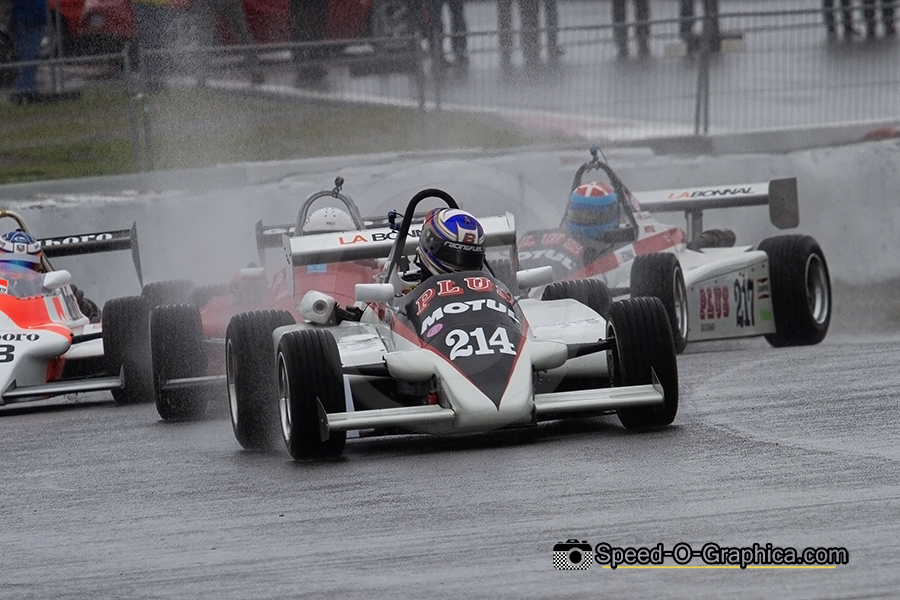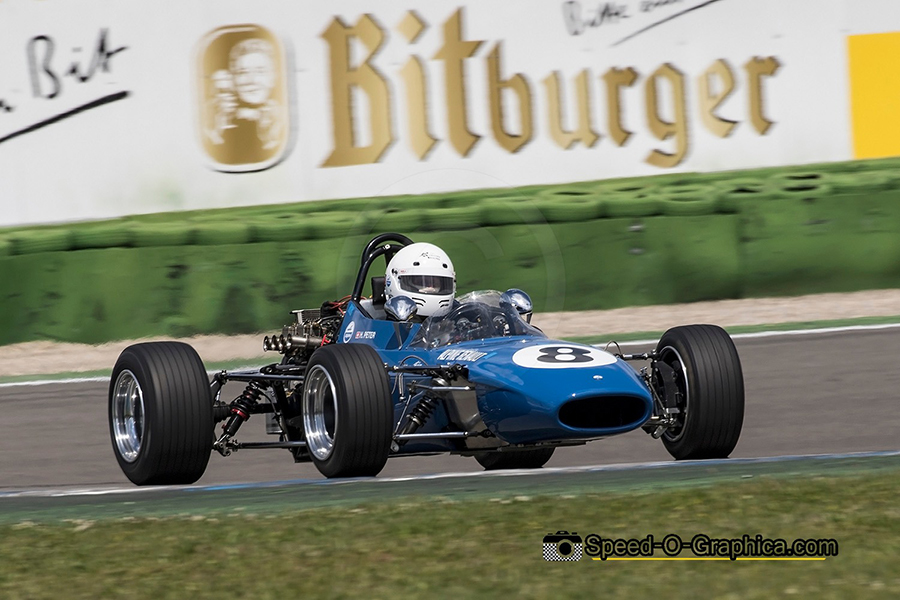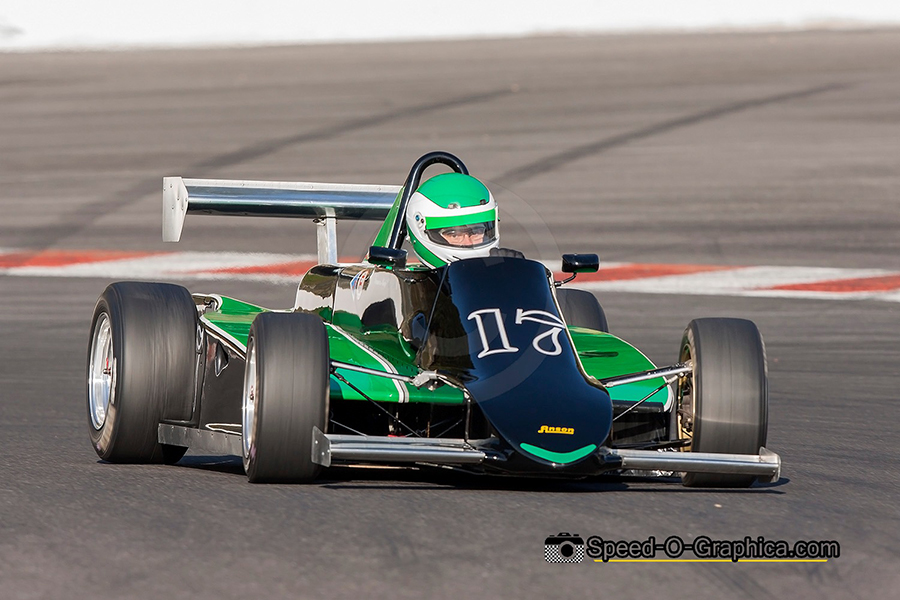
By Marcel Hundscheid / Speed-O-Graphica
The 2023 TABAC Classic Grand Prix took place at the beginning of September, held at the famous TT Circuit Assen in the north of the Netherlands. Read on for our full photo gallery and news from the event.
A unique historic event that took place for the second time with attention to both historic motor cars and historic bikes. This combination of bikes and cars is an uncommon sight these days. During the Goodwood Revival, for example, the classic motorcycles are a regular part of the program. Other historic motorsport events place particular emphasis on four-wheelers.

Sun-drenched and un-Dutch tropical temperatures featured prominently during the three-day event. Sometimes it seemed like it was even too hot for drivers and spectators.
Crowd-pullers were two big stars from the United States, Kevin Schwantz and Randy Mamola. Schwantz won the Dutch TT in 1991 on a Lucky Strike Suzuki RGV500, with which he provided a number of exciting demos during the weekend in Assen. Two years later, Schwantz took the world title in the 500 cc class. Compatriot Randy Mamola won the Dutch TT in 1981 on a Heron Suzuki XR34 M1. Mamola and Schwantz came both into action during the demos, much to the delight of the audience.

The TT Circuit Assen was opened in 1955 and has a rich history. At the time, the circuit had a length of 7705 metres. In the period 2005-2006 it was shortened to 6027 metres, while in 2010 the circuit measured 6017 metres in length after further adjustment. Nowadays the circuit is mainly known worldwide for the annual MotoGP TT Assen and the World Championship for Superbikes. In addition to motorcycle competitions, international racing car competitions are held.

In addition to competitions with historic Formula 3 cars, Opel Lotus, touring cars and GTs, the program also included various demonstrations. Enthusiasts of historic two-wheelers, inextricably linked to the TT circuit, were also taken into account with the arrival of IHRO.
The AvD Historic Race Cup was present from Germany with the Historic F3 Interseries and Formula Ford Racing from Belgium. Touring car and GT enthusiasts would have thoroughly enjoyed the Youngtimer Touring Car Challenge, RECO NK GTTC, NK82-90 (HARC), Supersixties by NK HTGT and the Kampf der Zwerge.
Lovers of classic racing motorcycles could indulge in the presence of NK Classics IHRO, while demonstrations were provided by, among others, the Dutch Vintage Sportscar Club.

By far the hottest battle was fought in the Supersixties by NK HTGT. During the first race on Saturday, the lead changed three times between the Corvette Grand Sport of Michiel Campagne and Allard Kalff, the Shelby Cobra of Bas Janssen and Kevin Abbring and the Jaguar E-Type of Rhea Sautter and Andy Newall. Nevertheless, victory ultimately went to the Lotus Elan of Philippe Vermast. During the second race on Sunday it was again a fight for victory. This time the Campagne-Kalff duo came out on top.

The organisation behind TABAC Classic GP Assen can look back on a successful event that undoubtedly has the potential to grow into one of the major historic car/motorsport events in Europe. We are already looking forward with interest to the third edition in 2024.
Results Classic GP Assen 2023:
AvD Historic Formula 3 Interseries
Race 1
- Alexander Weiss, Reynard F873
- Valerio Leone, Dallara F390, + 12.136
- Davide Leone, March 783, + 30.998
Race 2
- Alexander Weiss, Reynard F873
- Stephane Lechine, Reynard F389, + 18.223
- Valerio Leone, Dallara F390, + 24.257
AvD Historic Race Cup FFR/OR
Race 1
- Ralf Goral, Opel Lotus Mk. II
- Jochen Thissen, Opel Lotus Mk. II, + 1.875
- Henk van der Spoel, Reynard SF86, + 15.639
Race 2
- Ralf Goral, Opel Lotus Mk. II
- Jochen Thissen, Opel Lotus Mk. II, + 1.756
- Philip Menzner, Reynard SF86, + 19.525
Colmore YTCC
Race 1
- Amanda Hennesy, Argo JM19C
- Roger Bolliger, Pontiac Trans Am SCCA, + 20.441
- Daniel Schrey, Porsche 935 K1, + 29.332
Race 2
- Amanda Hennesy, Argo JM19C
- Daniel Schrey, Porsche 935 K1, + 18.926
- Jack Gadd, Ford Escort Mk. 1 RSR, + 31.848
Race 3
- Amanda Hennesy, Argo JM19C
- Daniel Schrey, Porsche 935 K1, + 25.085
- Brown-Brown, Ford Sierra RS500, + 30.737
Race 4
- Daniel Schrey, Porsche 935 K1
- Jack Gadd, Ford Escort Mk. 1 RSR, + 2.256
- Bas Jansen-Kevin Abbring, BMW M3 E30, + 3.330
Race 5
- Daniel Schrey, Porsche 935 K1
- Leonard Batenburg, BMW M3 E30, + 4.022
- Martin Reynolds, Ford Escort Mk.II, + 18.496
Battle of the Dwarfs
Race 1
- Enzo Thiefain, Austin Mini Cooper S
- Gregor Nick, Mini Swiss 24 H Special, + 1.496
- Hans März, Simca 1200 S, + 32.618
Race 2
- Gregor Nick, Mini Swiss 24 H Special
- Enzo Thiefain, Austin Mini Cooper S, + 0.018
- Hans März, Simca 1200 S, + 3.937
NK 82-90 (HARC)
Race 1
- Leonard Batenburg, BMW M3 E30
- Pieter Bikker, BMW E30 2.5 Group A, + 1:43.093
- Sander Roest, Porsche 944, + 1 lap
Race 2
- Leonard Batenburg, BMW M3 E30
- Pieter Bikker, BMW E30 2.5 Group A, + 1:44.450
- Sander Roest, Porsche 944, + 1 lap
Race 3
- Leonard Batenburg, BMW M3 E30
- Pieter Bikker, BMW E30 2.5 Group A, + 1:52.070
- Marc Burger, Porsche 944 2.5 Cup, + 1 lap
NK Classics IHRO
Race 1
- Mark Cronshaw, Matchless JCRacing 450
- Marc Beltman, BMW R50, + 14.774
- Jeffrey Vermeulen, Ducati Mk, + 20.121
Race 2
- Mark Cronshaw, Matchless JCRacing 450
- Jeffrey Vermeulen, Ducati Mk, + 16.330
- Marc Beltman, BMW R50, + 16.436
REKO NK GTTC
Race 1
- Daniel Schrey, Porsche 935 K1
- Hans de Graaf, Porsche 911, + 27.713
- Cees Lubbers, BMW 3.0 CSL, + 28.925
Race 2
- Daniel Schrey, Porsche 935 K1
- Hans de Graaf, Porsche 911, + 28.981
- Marcel Frijlink, Ford Escort RS, + 1:03.386
Race 3
- Daniel Schrey, Porsche 935 K1
- Anskar Masman, Porsche 935 K1, + 9.800
- Hans de Graaf, Porsche 911, + 10.714
Supersixties by NKHTGT
Race 1
- Philippe Vermast, Lotus Elan 26R
- Roelant de Waard, Shelby GT350, + 9.095
- Bas Jansen-Kevin Abbring, Shelby Cobra, + 9.095
Race 2
- Daniel Schrey, Porsche 935 K1
- Roelant de Waard, Shelby GT350, + 32.468
- Rhea Sautter-Andy Newall, Jaguar E-Type, + 40.059
The post Schwantz and Mamola Grace the TABAC Classic GP Assen 2023 appeared first on Motorsport Retro.




























































































































